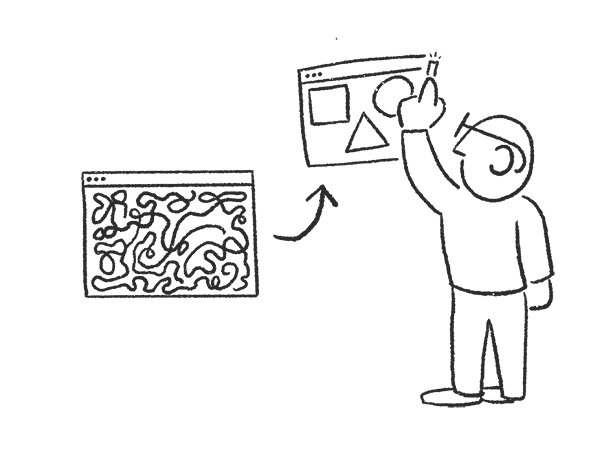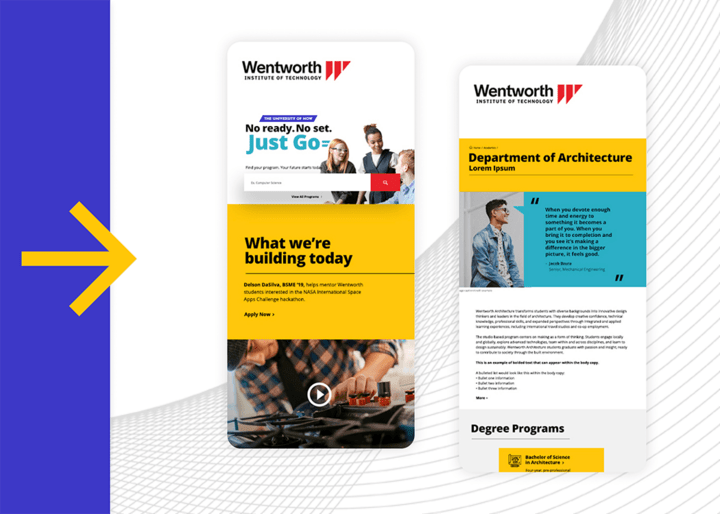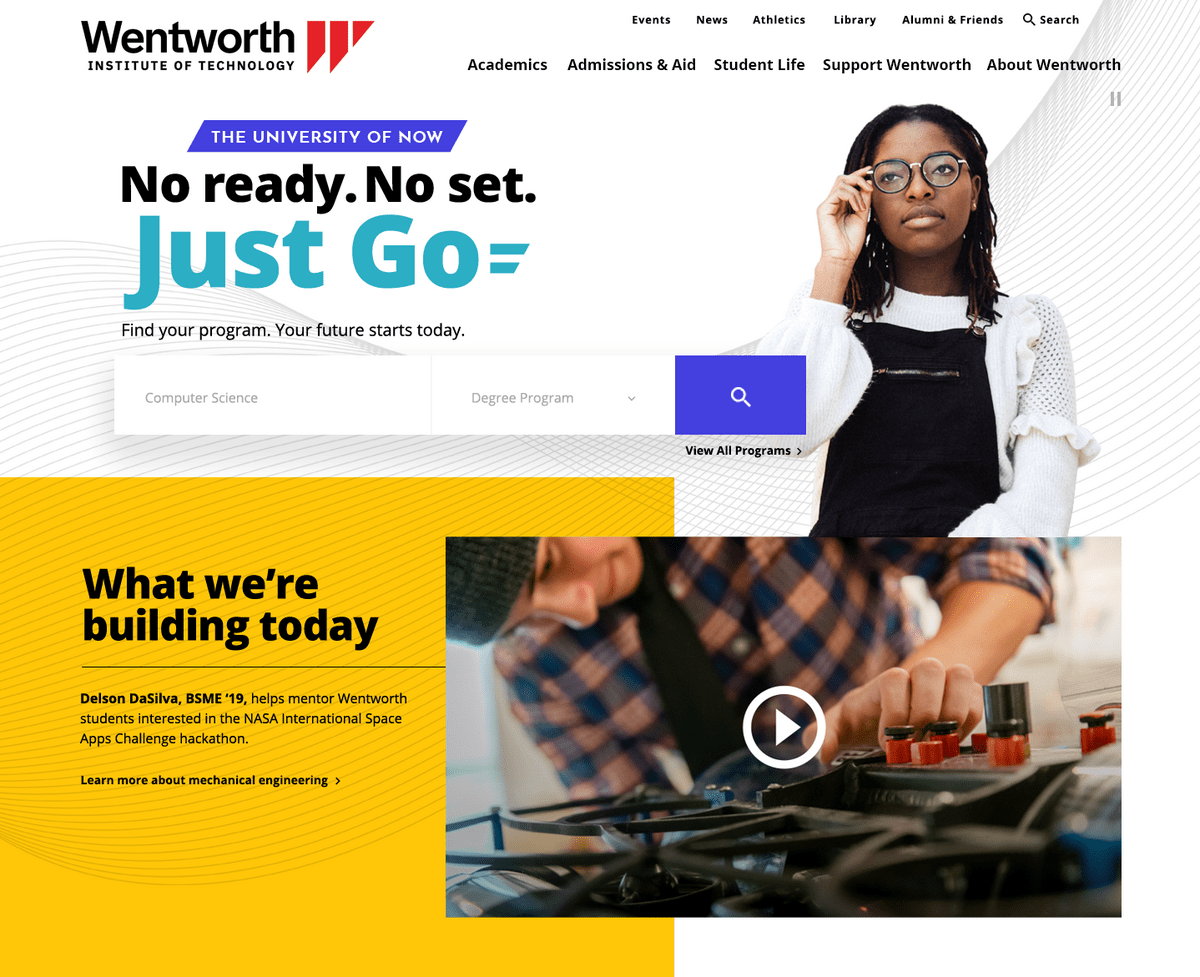Blackboard’s shift to a solution-driven digital experience


-
Art DirectorColin Panetta
Blackboard is the largest education technology company in the world, serving nearly 100 million users in every region of the globe. Their comprehensive suite of products and services power institutions looking to teach, engage their community and provide a dynamic educational experience to students.
Blackboard is an innovative, fast-moving organization, and their digital marketing tools needed to support that. To drive their next phase of growth, Blackboard engaged Last Call Media to build a global marketing platform on Drupal 8. The ability to iterate quickly, launch new marketing campaigns, and spin up sites in new regions is crucial for the Blackboard team. Ultimately moving faster means a better chance of competing against an increasing number of competitors.
Last Call Media set out to help Blackboard test and implement a bold new approach to digital marketing, and as a result, transformed the way Blackboard.com reached and engaged educators.
How we did it
Surfacing Blackboard’s value proposition in the main navigation
The largest opportunity with the new global marketing platform was shifting how Blackboard connected with its prospective customers.
Originally, a prospective customer’s journey would begin with selecting their industry to dive deeper into a plethora of information about the different products and services. This experience was informative, but it didn’t make it clear that Blackboard’s competitive edge is not in any one individual product but rather in the interconnectedness of their various products, and how they come together to build a dynamic educational ecosystem, regardless of a customer’s industry. We worked with Blackboard to transition from an industry-focused navigation, originally:
To journeys that surface Blackboard’s value streams first: Teaching & Learning, Community Engagement, and Consulting Services.
Given the importance of Blackboard.com as a marketing tool to drive revenue, we knew we needed to test our efforts in order to identify any usability issues before the site went live. To do this, we conducted in-person user testing at Blackboard’s annual user convention, BbWorld. We gained valuable insight that informed the final structure of the site navigation. Having positive and constructive real-world user feedback was essential in gaining stakeholder buy-in on this new approach.
Now, Blackboard.com with its revised primary navigation helps connect prospective customers to the different ways Blackboard provides value to its customers.
Empowering global marketers through a consistent UX
Prior to the new platform, one of the major challenges Blackboard’s marketers had with the former Tridion content management system was efficiency. In the past, every page needed to be built manually by Blackboard’s internal web team. Marketers used to submit a form to the web team. Often faced with a backlog several weeks long, the web team created it from scratch as soon as possible. A draft page would be created, sent back to the marketer, and any edits would be returned in a document. This could take several days at best to release a new page or changes to an existing page.
Blackboard marketers can now add and edit content easily while remaining on brand and demonstrating Blackboard’s impact around the globe.
After understanding this process, the different types of content needed and ways that content can be presented to support the new user journeys, we delivered a collection of over a dozen flexible components. Now marketers worldwide are able to create and edit pages on their own, reducing time to market and costs, and the web team is able to focus on other higher value-creating activities.
Powered by a modern CMS, Drupal 8
Blackboard needed an enterprise-grade CMS that was capable of scaling to meet their increasing marketing needs while also remaining easy for their content authors to manage. Drupal was a great choice for Blackboard as it enabled them to respond and make content and code-level changes quickly, including introducing new functionality.
The next iteration of the Blackboard brand, supported by a pattern library
The new platform provided an opportunity to rethink how Blackboard uses space and colors so their digital properties are more consistent in look, feel, and structure to their products.
Blackboard started using color more sparingly and with greater purpose, and the new platform better utilizes white space and reserves color to truly highlight the content Blackboard wants to bring front and center. Subtle variations in the “Call-to-Action” button styles were added to make it clearer to the site visitor what the next step is. With the new platform, Blackboard has removed many of the bright yellow buttons and softened their approach and introduced a few more “friendlier” color options to their web palette. The outcome here is that Blackboard.com, the flagship marketing platform looks and feels consistent with Blackboard’s products and services.
A globally consistent brand experience with localized messaging
As a global company, Blackboard’s marketing team needs to be able to quickly position their products and services to customers in those markets directly, in their language. Further, Blackboard’s marketing and content strategy varies per market and therefore often by language. Simply translating pages into different languages was not sufficient given it’s often the case that not all products and services are available in all markets, and even when they are they are often positioned differently. A product may be marketed differently in Spain and in Germany while also not being available in Australia, for example, which means we needed a different approach to translation that supported localization. Blackboard’s new Drupal 8 site had to not only provide content in different languages but also content specific to each visitor’s geographic location.
To support this, we built a Global Site feature in the new Blackboard.com that allows the Blackboard marketing team to spin up and manage new sites in different languages quickly without the need to engage development. At launch, this included close to two dozen sites in around 14 different languages.
We extended Drupal 8 core’s translate functionality to support the variations in language between American English and Queen’s English and Latin American and Castilian Spanish while maintaining flexibility so that content could also be localized for different regions.
Blackboard’s requirements were complex and caused us to rethink our typical multilingual strategy. Instead of creating a site that supports content in multiple languages, we built a localization platform that takes into account available product offerings as well as language and regional nuance - creating a platform for an organization that is not only multilingual but truly global.
A commitment to web accessibility
Blackboard and Last Call Media share a commitment to ensuring what we create is fully accessible to all audiences, regardless of ability. To that end, we had accessibility needs in mind from the very beginning. Our cross-functional approach to product development meant that we were able to validate early on that our work would meet WCAG 2.1 minimums, and by engaging users of assistive technology to assist with testing as development progressed, we knew that the release would also be truly usable on day one.
Our initial objective was to help Blackboard respond faster to changing customer demands worldwide by improving the content authoring experience for their marketing team, empowering their internal development teams to sustain and iterate on the platform for the long haul, and reducing operating costs.
With input from Blackboard’s customers and employees, we led the delivery of an improved user experience for Blackboard’s community, created a platform to showcase their products and services, and helped Blackboard tell the story of how they continue to positively impact learners, educators, and institutions around the globe.
The relaunched Blackboard.com saw a decreased bounce rate on the homepage, more users finding their destination quickly, and a dramatic increase in traffic to the free trial page. The new flexible, modern, engagement platform for Blackboard is more a customer-focused digital experience and supports their current and future marketing objectives. It has helped Blackboard thrive in a constantly changing and increasingly competitive edtech environment.


